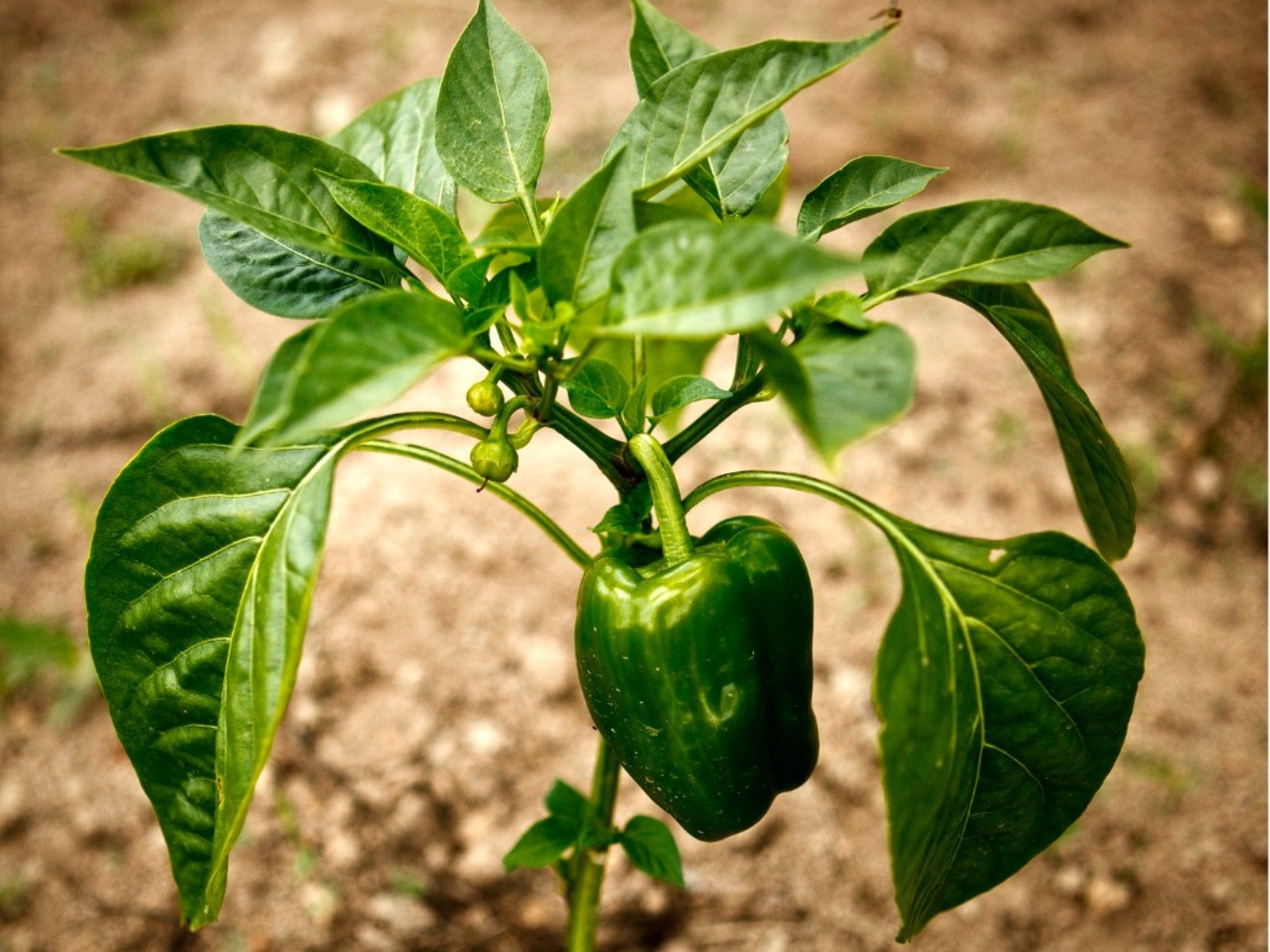Common Pepper Plant Problems – Pepper Plant Diseases And Pests


Bonnie L. Grant
Pepper plants are a staple in most vegetable gardens. They’re easy to grow and add great flavor to countless dishes. Mild varieties like bell peppers are essential in many kinds of salads and for healthy snacking. Hot varieties can add a little or a lot of spiciness to your dishes. All kinds add a exciting burst of color to recipes.
This warm season crop that is relatively easy to grow, save for a few pepper diseases and pests. Whether you're growing sweet or hot peppers, learn the signs of disease and pest damage for optimum plant health and yields.
Pepper Cultivation
Peppers need temperatures between 70 and 85 degrees F ( 21-30 C) to flower and flourish. Night temperatures should not drop below 60 F ( 16 C). Most peppers require a long growing period and should be started indoors in cooler climes. These transplants are hardened off and set into the ground after all danger of frost has passed.
Peppers are in the nightshade family which includes such plants as tomatoes and eggplants. It is best to avoid planting them where other nightshades were grown the previous year. This practice will help avoid soil-borne nightshade diseases from affecting the plants.
Environmental Problems Growing Peppers
Warm season plants like peppers need well draining soil or they face root rot. A sudden freeze has the potential to kill the entire plant, so peppers must be protected from frost with water walls or frost blankets if such an event threatens. Watering deeply will encourage deep, broad root systems, but the soil should dry out at the top before irrigating anew.
Nutrient deficiencies in the soil can cause numerous problems, such as browning, chlorosis, slow growth, fruit deformation, and fruit drop. Soil testing will help indicate what nutrients may be missing. Nitrogen is necessary for good leaf development, phosphorus is important for root development, and potassium drives flower and fruit production. Calcium is also important to prevent blossom end rot, a common problem that affects the fruit.
Common Pepper Plant Bugs
There are several insects and creatures that enjoy feeding on pepper plants. Most of them can be easily removed by hand or with a spray of soapy water. You’ll need to check your plants frequently for bugs and worms to make sure they don’t proliferate. Keeping the garden area around your pepper plants clean and free of dead leaves and debris is important – insects love to hide and breed in dead or decaying plant material.
Sign up for the Gardening Know How newsletter today and receive a free copy of our e-book "How to Grow Delicious Tomatoes".
Here are some pests that love pepper plants:
- Cutworms are usually the most damaging to peppers and they especially like the young seedlings.
- Aphids will cluster beneath pepper plant leaves, excreting honeydew, which attracts other insects. Aphids create spots, distort the plants’ leaves, and will make them wilt. They also transmit several dangerous viruses, like pepper mottle virus, cucumber mosaic virus, tobacco etch virus, and potato virus.
- Leaf miners damage leaves with their feeding trails.
- The tiny thrip can decimate a crop in large numbers. They are hard to see with the naked eye but the eggs are laid in the plant tissue. After hatching, all stages of the thrip feed on the plant. They are considered a commercial pepper plant pest that threatens large scale production crops.
- In pepper production centers, the pepper weevil is the most significant pest on pepper plants. The female of the species penetrates the fruit and lays her eggs inside. The infestation is most often noticed because flowers, buds, and fruit fall off the plant.
- Both armyworms and fruitworms love to feed on new, tender pepper pods, and will also occasionally munch on the foliage.
- Flea beetles attack young plants. If they’re present, you’ll see distinct holes in the foliage.
- Corn borers find their way to the inside of the pepper pods and destroy them.
- Hornworms can decimate a pepper plant, but they’re so large you can pluck them off by hand.
- Whiteflies can be extremely destructive to pepper plants. They can transmit harmful viruses, and cause leaves to shrivel, yellow, and drop.
Pepper Plant Diseases
When choosing your pepper plants and seeds, try to stick with disease-resistant varieties. You can look on seed packages for a code to tell you about this. For example, codes like HR: BLS 1-3 or IR: TEV mean that plants grown from these seeds will have a strong resistance to bacterial leaf spot and certain viruses. Bacterial problems with peppers often come from planting infected seeds. One virus can destroy an entire crop of peppers.
Common Fungal Pepper Diseases
The most common problem with pepper plants stems from fungal disease which shows up as affected leaves. Destructive strains of fungus can flourish in an environment where there’s too much water.
Peppers require soil that is loose, well-draining, nutrient rich, and has not had other nightshades previously planted in the site. But even if all those needs are met, there is still the possibility of disease in pepper plants.
- Anthracnose affects many crops and ornamental plants. It is a fungus harbored in soil that splashes up onto leaves, developing round, orange, tan, or black lesions.
- Cercospora affects all parts of the plant and fruit and results in oval spots with tan centers bordered by red. Wet rot is a fungus that develops into fuzzy white to gray mold on plant parts.
- Phytophthora blight causes lemon shaped lesions and affects all parts of the plant. Southern blight or white mold causes severe wilting in plants. Most fungal diseases favor warm temperatures and excessive moisture. Avoid overhead watering and use fungicides as necessary.
Viral and Bacterial Diseases
Disease in pepper plants is not always through fungal spores. Bacterial spot is a disease which causes scabby, irregular lesions on the fruit. The bacteria is spread through water. Often plants are affected at the nursery and the disease can spread through seed. Destroy any infected plants to prevent the entire crop from acquiring the disease.
Here are six of the most common pepper plant diseases:
- Bacterial leaf spot is one of the more common infections in pepper plants. It causes yellowish spots on the leaves which may turn brown or enlarge, and will cause leaf drop.
- Mosaic virus is also a common viral infection that attracts insects. There’s not much that can be done to alleviate this one because once it’s invaded the plant, it’s already too late to treat it. It causes limited production and stunting of the plant and its leaves.
- Southern blight is a fungal disease that’s prevalent in warm climates. Stems rot and the plant wilts, eventually dying.
- Powdery mildew can appear mostly on the undersides of leaves. It’s associated with warm, humid conditions.
- Blossom end rot is due to calcium deficiency and sporadic watering. Ripe rot occurs on ripening peppers growing in warm, humid conditions. Harvest peppers prior to use and store any unused peppers in a cool area away from direct light.
- Sunscald is a result of too much exposure to direct sunlight. The fruit may become light colored and feel dry and papery.
How to Treat Pepper Plant Problems
Diagnosis of the problem in the plant is crucial to treatment. Where fungal disease is suspected, certain fungicides are helpful. Avoiding overhead watering and watering only when the plant stems and leaves can air dry quickly will control many of those diseases. Viral disease may be controlled by managing aphids and thrips which spread some of these diseases.
Purchasing plants and seeds that are certified and are bred for resistance will also be beneficial. Keep any mechanical equipment, hands, and boots sanitized to avoid spreading other diseases. Combat insects with natural means like bacillus thuringiensis, horticultural oils and soaps, or predatory insects like ladybugs.
Rotate your vegetable crops each season to prevent buildup in the soil of diseases or insects. Grow disease-resistant pepper varieties. Keep the pepper garden free from debris. Make sure your plants don’t get excessive moisture and soil is well-draining.

Caroline Bloomfield is Manager of Marketing Communications at Gardening Know How since 2019. A northwest native, she has resided and gardened in multiple zones in the U.S. and is currently at home in Bandon, Oregon. Writing and editing for various publications since 1998, her BA in American Studies from Southern Maine University includes an emphasis in English. She was raised in California by avid gardeners and continues to enjoy the natural world with an appreciation for the concepts of sustainability and organic care for the planet.
- Bonnie L. GrantWriter